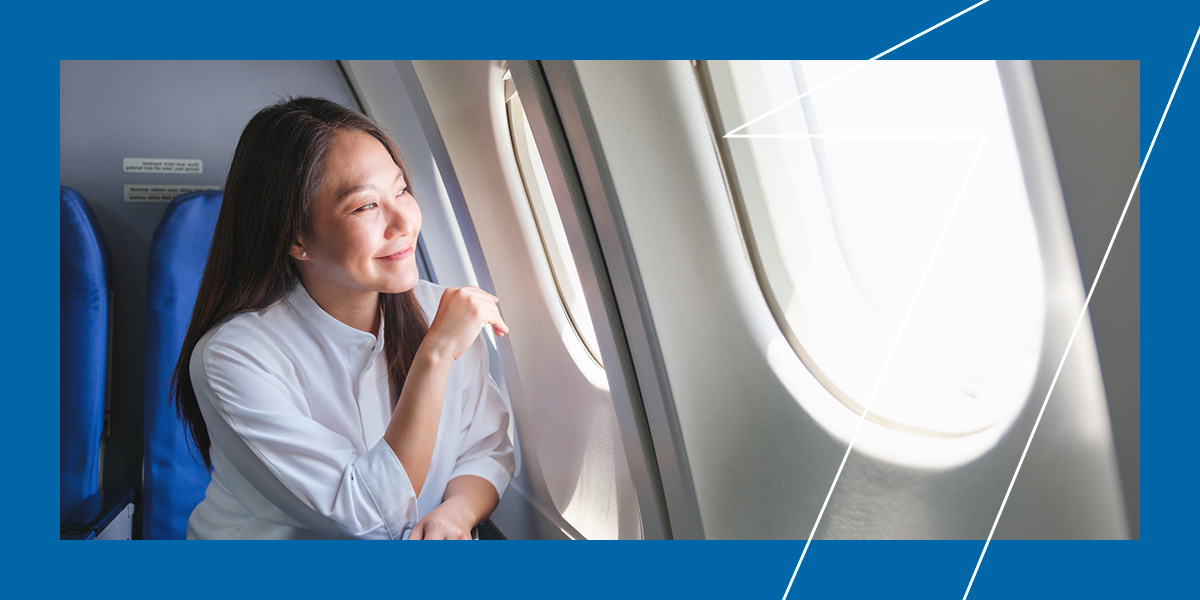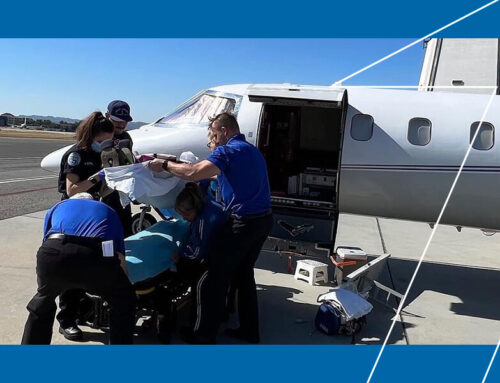Evaluating your health before a flight is essential for comfort and safety. An aircraft cabin’s conditions and long periods of inactivity can exacerbate certain health symptoms or cause serious complications. Medical air transport is a safe alternative if you need to fly with a specific health condition or while you recover from a recent procedure.
Flying With a Medical Condition
Taking precautions is important when flying with certain health conditions. The following factors can impact health while traveling:
Altitude and Cabin Pressure
Aircraft fly at high altitudes where air pressure is lower. While commercial aircraft cabins are pressurized for safety, they are not pressurized to sea-level pressure. The change in pressure you experience while flying can limit the amount of oxygen in your blood, hindering your blood’s ability to carry oxygen to essential organs.
An aircraft’s change in cabin pressure can also increase gas expansion in different areas of the body. This most commonly affects the digestive system, but it can also affect surgical wounds.
Dry Air
The air that circulates throughout an aircraft’s cabin comes from the engine bleed air. This air is naturally dry at high altitudes, which may cause dehydration and further exacerbate health conditions. Dehydration can thicken the blood, making it easier for blood clots to form.
Confined Spaces and Recirculated Air
Germs and pathogens spread faster in confined spaces. Being in an aircraft cabin increases exposure to bacteria and airborne illness. If you have a health condition or are recovering from a recent surgery, you are at a higher risk of contracting a virus or infection.
Long Flights
Long flights require you to sit for extended periods. The longer a flight is, the less time you have to move around and boost circulation. This lack of movement can lead to swelling and an increased risk of blood clots.
Aircraft cabins are often cramped and offer minimal legroom, which can cause blood clots to form in the leg’s deep veins due to limited movement. This is known as deep vein thrombosis (DVT) and can cause serious complications. Other factors, such as low cabin pressure and dry air, can also play a role in the formation of DVT.
Common Health Conditions That May Prohibit Commercial Air Travel
Here are some common situations and health conditions that may prohibit commercial air travel:
Recent Surgery
Changes in cabin pressure and prolonged immobility can increase post-surgery risks such as infections and blood clots. These are the most common types of surgeries that require extra caution:
- Complicated abdominal surgeries
- Eye procedures
- Heart surgeries
Flying too soon after a surgery may delay the recovery process or cause serious complications. If a cabin’s low pressure causes gas expansion in the body, it can increase the risk of wound separation or dehiscence and lead to potential infection. Ask your doctor how long after your surgery you should wait before boarding a flight.
Cardiovascular Conditions
Flying can strain the cardiovascular system. Cabin pressure changes, prolonged inactivity and reduced oxygen levels can hinder the heart from receiving enough oxygen-rich blood. It can also cause air expansion and damage the heart or lungs. Flying increases the risk of complications associated with these heart conditions:
- Irregular heart rate (cardiac arrhythmia)
- Coronary artery disease (CAD)
- Heart device implant
- Recent heart surgery
- Pulmonary arterial disease
- Heart failure
Flying after a heart attack or with a cardiovascular condition is possible, but it may require extra support or a special medical flight.
Respiratory Complications
Low oxygen levels can be especially dangerous for individuals with respiratory conditions. Flying can cause or exacerbate symptoms such as coughing, fatigue and shortness of breath. It also increases the chance of a pulmonary embolism (PE), which occurs when a blood clot travels to the lungs and blocks an artery. If you have a lung condition, you may require extra oxygen during a flight. Flying can seriously affect the following respiratory conditions:
- Chronic obstructive pulmonary disease (COPD)
- Pulmonary hypertension
- Asthma
- Cystic fibrosis
- Pneumothorax
- Recent respiratory infection or pneumonia
- Pulmonary fibrosis
Neurological Conditions
Flying can increase health risks if you have one of the following neurological conditions or complications:
- Recent stroke
- Epilepsy
- Brain aneurysm
Stress, changes in altitude and sleep deprivation while flying can increase the chances of a blood clot or seizure. Commercial airlines don’t carry the anticonvulsant medications or medical equipment necessary to treat these complications.
Pregnancy
Both pregnancy and flying increase the risk of blood clots due to cabin pressure changes and prolonged inactivity. Flying after 36 weeks of pregnancy presents an additional risk because labor is more likely during this stage, and commercial airlines don’t have the medical staff or supplies to intervene in this type of situation.
Am I Safe to Fly?
Talking to your health care provider before flying is important if you are unsure about your health and safety. Your provider has the knowledge and experience to evaluate your unique situation and determine if a flight is safe. Tell your doctor how long you estimate the flight will be so they can consider the duration in their decision.
It’s also important to understand airline policies before traveling. Airlines often require a medical clearance if you want to fly after a recent surgery or hospitalization or if you are pregnant or have an injury.
Safe Travel Alternatives for High-Risk Individuals
If flying via a commercial airline is a high risk for your condition or feels unsafe to you, the following alternative options are available:
- Medical air transport: If you need to travel for medical care, you can fly safely on an air ambulance. Air ambulance teams provide safe transportation and medical care you can’t receive on a commercial aircraft. Air ambulances serve as mobile intensive care units (ICUs), and they are equipped with the necessary supplies to medically intervene if necessary. When you travel in an air ambulance, an experienced medical team monitors you throughout your entire trip and administers care if needed.
- Medical escort: A medical escort is a healthcare professional who travels with you on a commercial flight. Medical escorts can manage your medication, monitor you during your flight and provide care if needed.
AirCARE1 provides safe, comfortable medical transport. Our team offers experienced medical attention and holistic care during your journey. We focus on healing and aim to leave you in better condition than when you arrive.
Tips for Preparing for Air Travel With Health Concerns
If you plan to travel on a commercial airline with a medical condition, the following tips can help:
- Inform the airline about your condition and provide medical clearance documentation before your trip.
- Obtain travel insurance that includes medical coverage.
- Stay hydrated before, during and after your flight by drinking plenty of water and avoiding alcohol.
- Pack necessary medications in your carry-on luggage in case you need them during your flight.
- Wear compression socks to improve circulation.
Fly Safely With AirCARE1
Assessing your health before travel and flying with the proper precautions is vital for a safe flight. In some cases, you may need to travel to a medical facility in another location for better care. AirCARE1 is dedicated to helping you reach your destination with comfort and peace of mind.
We provide thorough, holistic care to manage your condition and help you start healing while we transport you where you need to go. Our long-range patient medical air transports and commercial medical escort services ensure you receive the medical monitoring and intervention you need for a safe flight. Request a quote for medical air transport services or learn more about how AirCARE1 can help.




